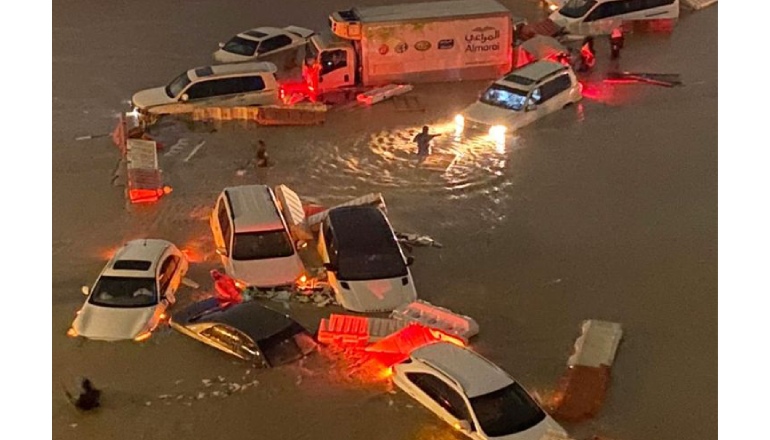For the first time in its history, Dubai experienced windstorms, torrential rain, and chaos.
Dubai, one of the iconic cities in the world in terms of infrastructure and development, has been brought to its knees in a few hours of heavy rains. However, why are people still reluctant to accept climate change?
Nobody has been spared by climate change, not even the developed world’s economies or the developing world’s. But as of yet, the UAE has not seen a catastrophic event of this scale related to climate change. As I write this blog, Dubai, one of the first countries to aid the nations in need following natural disasters, is being hit by natural wrath. It is the first of its kind in 75 years in the history of Dubai. Rains lashed across the UAE (Bahrain, Saudi Arabia, Oman and Qatar). Human lives and animals have not been spared.
While the nation will eventually come to terms with the loss and destruction of lives and property, the administration is still working to determine what caused this atypical shift in the climate.
What is more important is that Dubai hosted the COP 28 in Nov-Dec last year. The country is also at the forefront of transforming its cities into sustainable cities. It is transitioning to renewable energy and building future-ready infrastructure keeping a greener, cooler planet in mind.
As of today, Dubai is a living example of the adage that no one can withstand nature’s fury. Even as our TV screens (prime TV news channels) and social media are flooded with videos of water logging and helpless citizens stranded at various locations, one underlying factor comes to the fore: lack of infrastructure and unpreparedness of the local administration to tackle flooding and the resultant deluge.
Climate change and the infra connect:
This draws my focus on the inherent need to connect our cities and their infrastructure with a strong network that can seamlessly carry rainwater into the underground stormwater drains or use dams to prevent further damage. Mud roads or soil are the natural absorbents. These solutions serve as a reminder of the significance of the ancient architectural wonders that our ancestors constructed before perhaps even establishing the foundation for a new home.
But the world has moved with time. We have progressed with little regard for the environment and nature. These are warning signs for all of us.
The people and city of Dubai will likewise gradually come back to life. With strong regulations, a focus on compliance, competent leadership, and a thriving economy, I do not doubt that the city will maintain normalcy more quickly. In the background, policymakers and think tanks will undoubtedly be donning their thinking caps and considering ways to both determine future flood preparedness and prevent similar tragedies in the future.
It is acceptance, action and fast-tracking mitigation strategies that can save us from nature’s fury.

